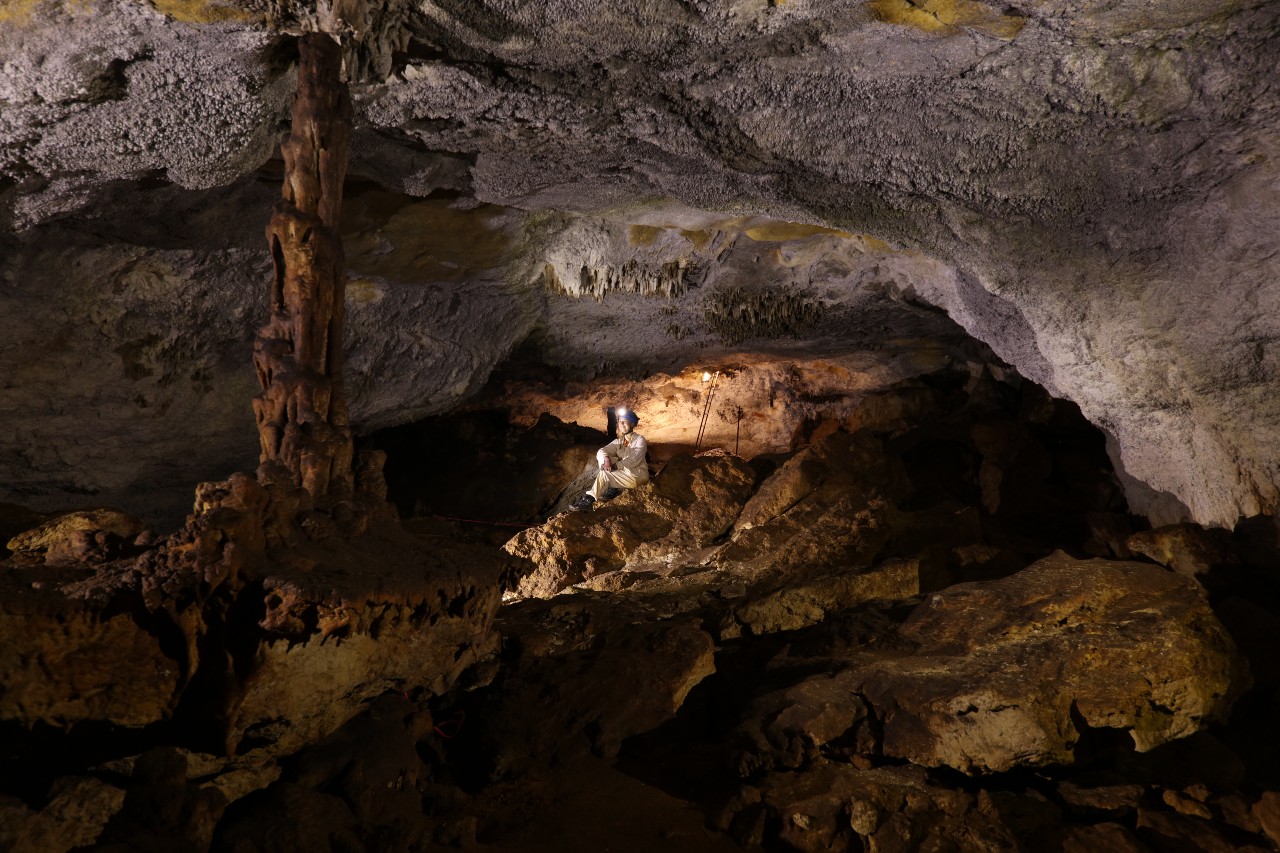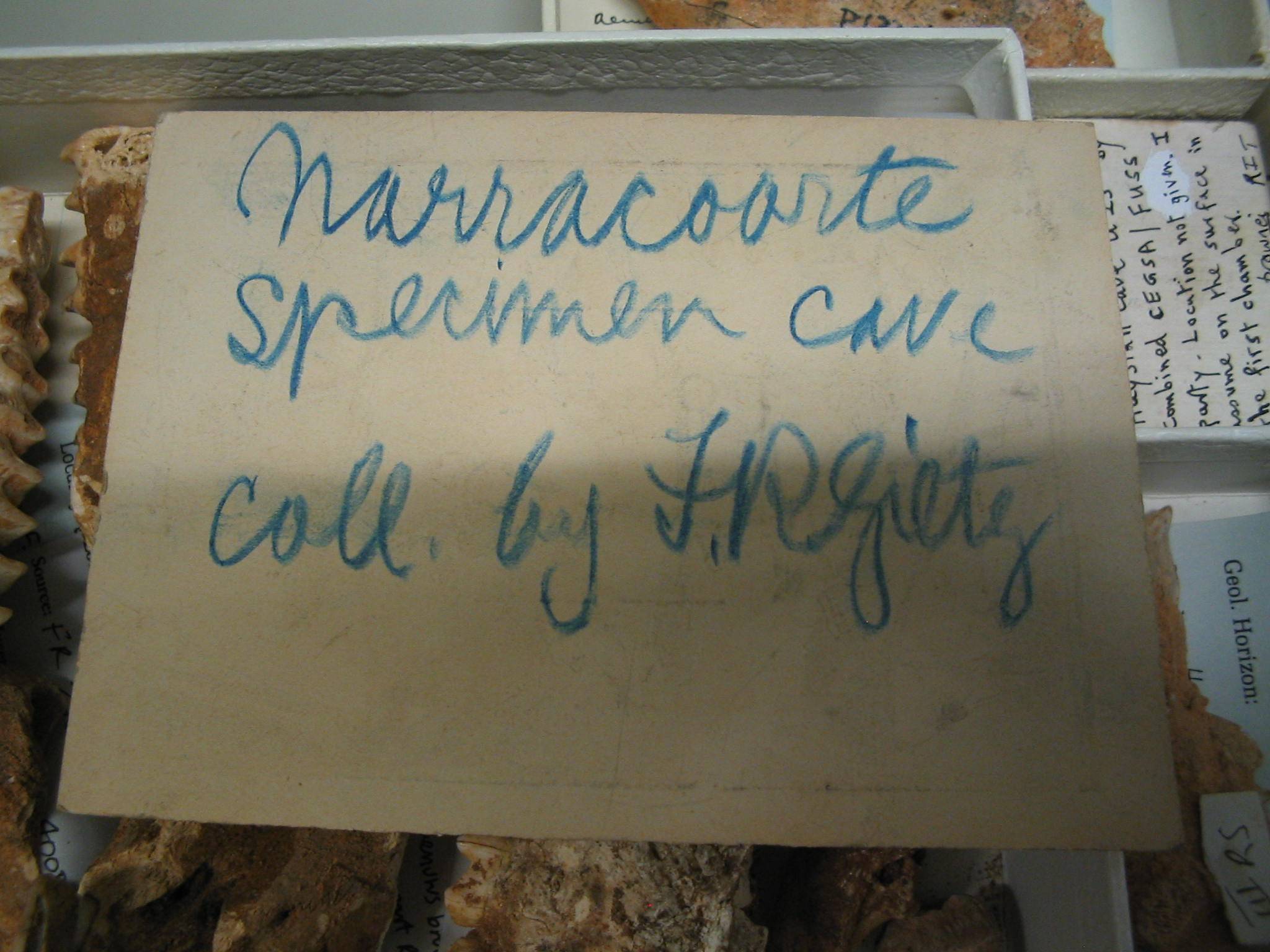Putting the ‘history’ in ‘prehistoric’: confirming the origin of the first collection of megafauna from the Naracoorte Caves
The World Heritage listed Naracoorte Caves in southeast South Australia contain some of the world’s most valuable fossil deposits from the Quaternary period (2.5 million years ago to the present). The caves are particularly famous for their ‘megafauna’ fossils. These large animals roamed the Australian continent for most of the Quaternary, before the majority became extinct around 45 thousand years ago.
While the Naracoorte Caves are famed for these megafauna, limited information has been available on the discovery and first recorded collection of their fossils at the site.Using a variety of historical documents Phd candidate Nertia Turner and Dr Liz Reed have successfully pieced together the mystery surrounding these fossils and increased the scientific value of the first collection of megafauna fossils from the Naracoorte Caves. Findings were recently published in Transactions of the Royal Society of South Australia.
[caption id="attachment_17206" align="alignnone" width="797"]
 Lead Researcher Nerita Turner in Specimen Cave, Naracoorte Cave, South Australia. Image: Steve Borne (2022)[/caption]
Lead Researcher Nerita Turner in Specimen Cave, Naracoorte Cave, South Australia. Image: Steve Borne (2022)[/caption]The first person to report the presence of megafauna fossils in the Naracoorte Caves was William Reddan, the caretaker of the caves and an important local historical figure. In 1908, while working within Specimen Cave, Reddan discovered and collected the fossils of several large animals. Following his discovery, Reddan sent a sample of these bones to the South Australian Museum’s Director, Edward Stirling, who promptly journeyed to Specimen Cave with his assistant Friedrich Zietz to collect more fossils. While certain details of this collection have always been well known, including the collection dates, collection site and collectors’ name, other important details have remained unclear. These details include the exact collection location and the age of the fossils themselves. Without this information, the scientific value of the fossils collection has remained fairly limited.
To overcome this obstacle, we analysed various historical documents and publications in the search for key pieces of information relating to the 1908 fossil collection. These documents included newspaper articles, museum reports and written correspondence. The breakthrough came from a letter Reddan sent to Stirling, describing the exact location within Specimen Cave where he collected the megafauna fossils. Fortunately, this was the same location as our own modern excavation pit and a series of dated sediment layers. Using this information, we were able to confirm that the fossils accumulated around 140 thousand years ago, during the Pleistocene epoch. This discovery has greatly increased the scientific value of the 1908 Specimen Cave fossil collection. These fossils can now be used to gather information on Naracoorte’s climate and environment during this period of the Peistocene, as well as other topics such as fossil accumulation.
During one of our trips to Specimen Cave, we also found a historically significant piece of “graffiti” written on a calcite column directly adjacent to the 1908 collection site. The message contained the names of five “tree planters” and their “Commander in Chief” – W. Reddan himself. The message was also accompanied by a date, 1890, which indicated that Reddan visited the cave many years before discovering the megafauna fossils.
[caption id="attachment_17207" align="alignnone" width="841"]
 Label written by Friedrich Zietz, accompanying the 1908 Specimen Cave fossil collection. Image: Dr Liz Reed (2018)[/caption]
Label written by Friedrich Zietz, accompanying the 1908 Specimen Cave fossil collection. Image: Dr Liz Reed (2018)[/caption]In addition to increasing the scientific value of the 1908 Specimen Cave fossil collection, this research has also provided information on the early history of fossil collecting at the Naracoorte Caves and important historical figures like Reddan, Stirling and Zietz. This information is valuable to the local Naracoorte community, as well as the Naracoorte Caves World Heritage Area, where it will likely be disseminated to tourists. Our research also emphasises the value of early museum fossil collections and associated historical research.
Further reading:
Turner, NK & Reed, EH 2023, ‘Using historical research to constrain the provenance and age of the first recorded collection of extinct Pleistocene large mammal fossils from the Naracoorte Caves, South Australia’, Transactions of the Royal Society of South Australia, pp. 1–17.
Partners Involved: Naracoorte Lucindale Council, Department of Environment and Water, South Australian Museum, Terre à Terre Pty. Ltd., Wrattonbully Wine Industries Association, and Defence Science and Technology Group.
Grant Information: This research was funded by Australian Research Council Linkage project LP160101249

Newsletter & social media
Join us for a sensational mix of news, events and research at the Environment Institute. Find out about new initiatives and share with your friends what's happening.
